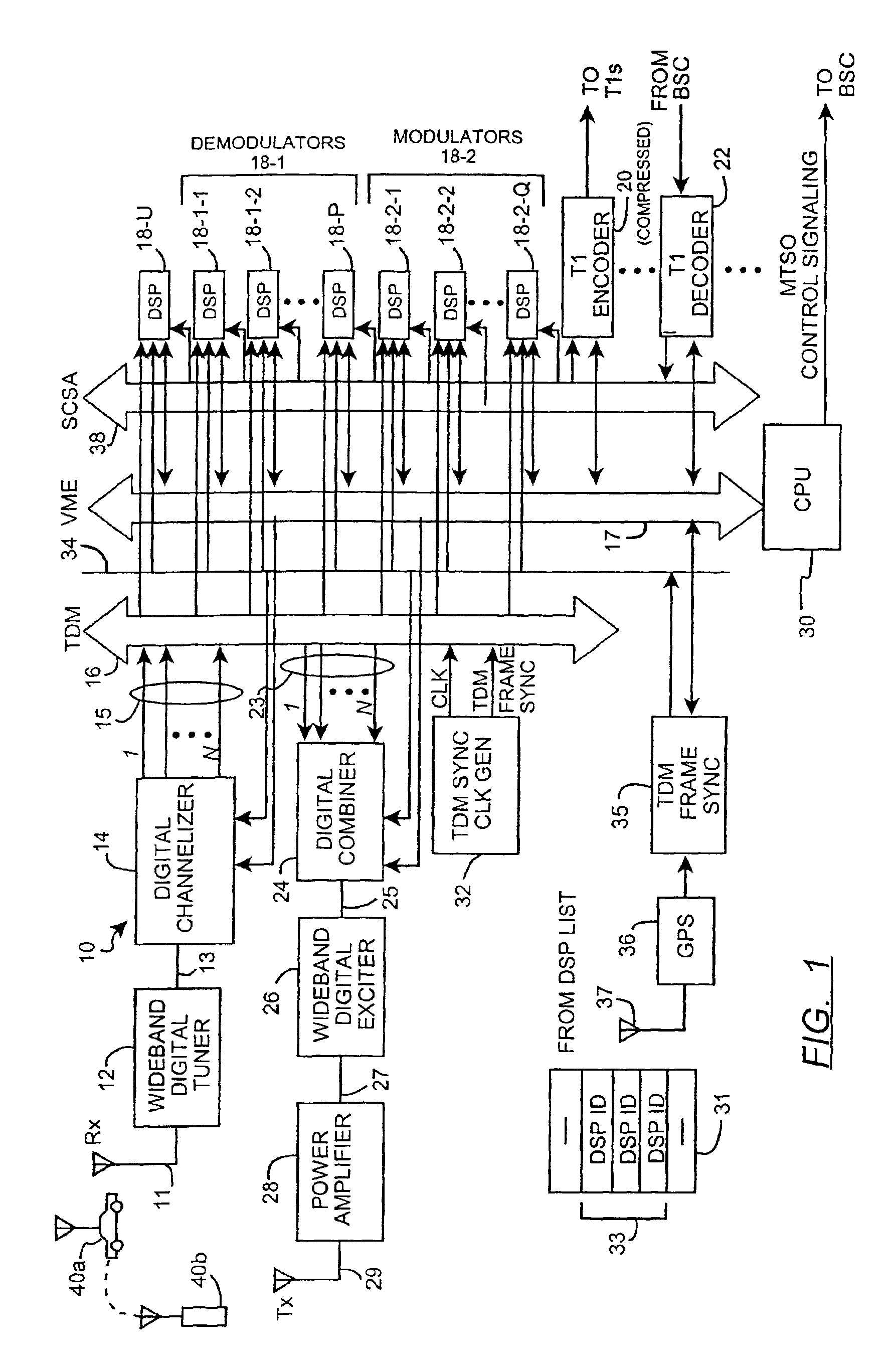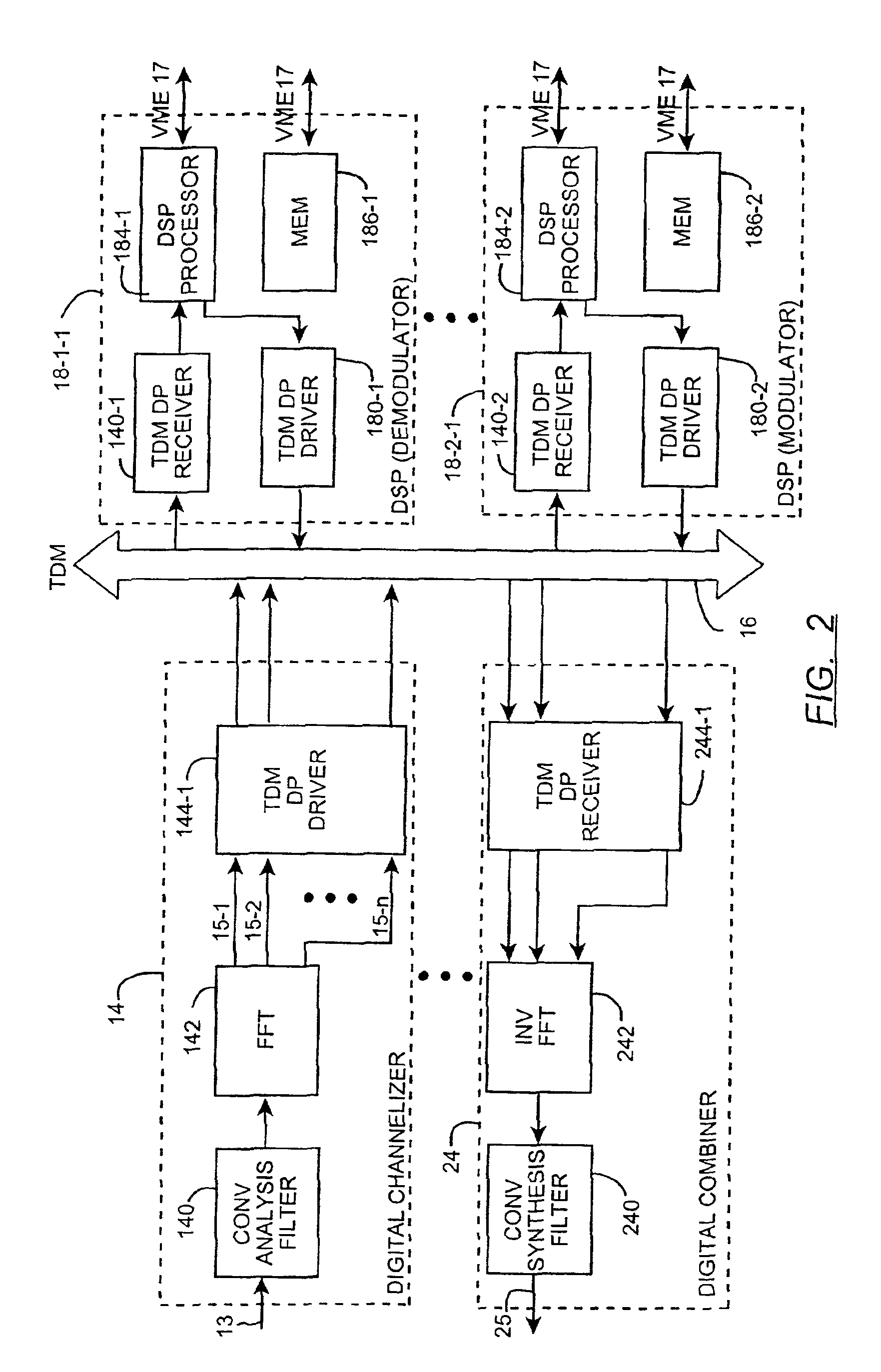Method of baseband frequency hopping utilizing time division multiplexed mapping between a radio transceiver and digital signal processing resources
- Summary
- Abstract
- Description
- Claims
- Application Information
AI Technical Summary
Benefits of technology
Problems solved by technology
Method used
Image
Examples
Embodiment Construction
[0027]FIG. 1 is a block diagram of a wideband wireless digital basestation 10 according to the invention. Briefly, the basestation 10 consists of a receive antenna 11, one or more wideband digital tuners 12, one or more digital channelizers 14, a time division multiplex (TDM) bus 16, a control bus 17, a plurality of digital signal processors (DSPs), a first subset of which are programmed to operate as demodulators 18-1-1, 18-1-2, . . . , 18-1-P (collectively, demodulators 18-1); a second subset of which are programmed to operate as modulators 18-2-1, 18-2-2, . . . , 18-2-Q (collectively, modulators 18-2); and a third subset 18-U of which are presently idle, transport signal (T-1) encoder 20, a T-1 decoder 22, one or more digital combiners 24, one or more wideband digital exciters 26, a power amplifier 28, a transmit antenna 29, a basestation control processing unit (CPU) 30, a TDM bus synchronization clock generator 32, a signal computing system architecture (SCSA) bus 38, a TDMA fr...
PUM
 Login to View More
Login to View More Abstract
Description
Claims
Application Information
 Login to View More
Login to View More - R&D
- Intellectual Property
- Life Sciences
- Materials
- Tech Scout
- Unparalleled Data Quality
- Higher Quality Content
- 60% Fewer Hallucinations
Browse by: Latest US Patents, China's latest patents, Technical Efficacy Thesaurus, Application Domain, Technology Topic, Popular Technical Reports.
© 2025 PatSnap. All rights reserved.Legal|Privacy policy|Modern Slavery Act Transparency Statement|Sitemap|About US| Contact US: help@patsnap.com



